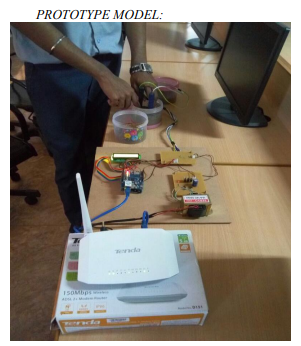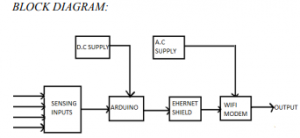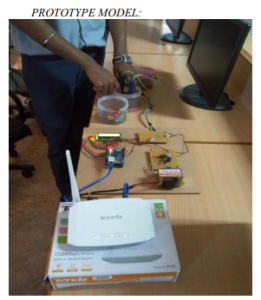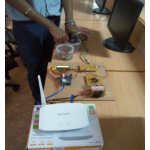
INTRODUCTION:
Soil is the most important renewable natural resources. It is the medium of plant growth and supports various types of living organisms on the earth. Soil fertility refers to the amount of nutrients in the soil, which is efficient to support plant growth. The nutrients present in the soil are sulphur, chlorine, copper, manganese, boron, iron, cobalt, zinc, potassium, phosphorous, nitrogen etc. They are required for the plant growth. By using the mineral sensors it is able to identify the nutrient present in the soil.
COMPONENTS USED:
power supply and regulator
a set of mineral sensors
temperature and moisture sensor
arduino controller
Ethernet shield
wi-fi module

WORKING:
The sensing inputs determine the values of the
soil.
These values are calibrated with the help of
microcontroller.
By means of Ethernet shield the arduino board is
connected to the internet.
Local devices can be connected by using local IP
with the help of wifi modem.

IMPLEMENTATION:
The project can be implemented in the tractor. if we implemented means no need of transformer to step down voltage .and we can use supply from battery itself for displaying the result in tractor ,by using a small LCD display so that the working people in farm can be also identify what type of plant is suitable for the land.
ADVANTAGES:
Low cost
Easy way of testing
Simpler in structure
Risk of farmers is reduced
CONCLUSION:
Today India ranks second in the world in farm output and 64% of cultivated land depends on monsoons. Irrigation accounts for 55-75% of water usage in India. To meet the needs of our population growth the agriculture should gets developed. IOT is now mainly focusing on agriculture as it plays vital role in the development of country’s economy. Thus this equipment produces a great deal in the field of agriculture making farmers simply dependent on themselves and to complete their work in the short period of time with high profit. Thus it leads to the development of our Indian economy too.


COMMENTS